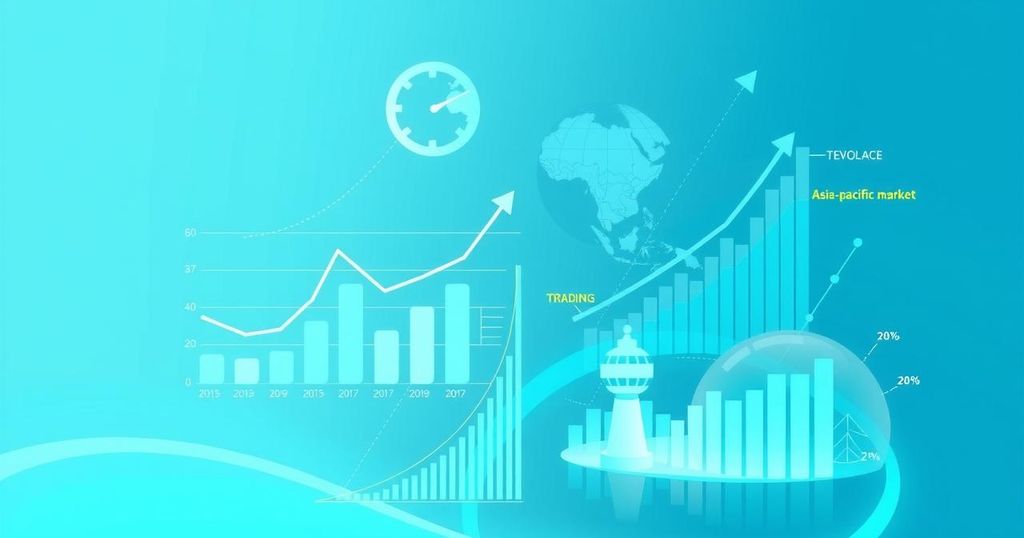Business
economics
ASIA, BOK FINANCIAL SECURITIES, BRENT, CHINA, DA, DEFENSE, DENNIS KISSLER, DONALD TRUMP, EUROPE, GLOBAL ECONOMY, GOLDMAN SACHS GROUP INC, INFLATION, INTEREST RATES, IRAN, JAPAN, MEXICO, MIDDLE EAST, NORTH AMERICA, OIL INDUSTRY, OIL PRICES, PETE HEGSETH, RED SEA, TEHRAN, TRUMP, UKRAINE, UNITED STATES, US, USA, VLADIMIR PUTIN, WASHINGTON, WEST TEXAS, XI, YEMEN
Leila Ramsay
0 Comments
Oil Prices Rise Amid Economic Optimism and Geopolitical Tensions
Oil prices have risen due to positive economic indicators from the US and China, alongside heightened geopolitical tensions involving the Houthi militia. Prices reflect a modest recovery potential amidst ongoing supply-demand dynamics, even as Goldman Sachs lowers Brent crude forecasts due to trade conflicts impacting the global economy.
Oil prices have increased for a second consecutive session, driven by encouraging economic indicators from the largest consumers of crude oil, specifically the United States and China. West Texas Intermediate rose by 0.6%, settling below $68 per barrel, following data indicating a modest slowdown in US retail sales, contrasting with more severe projections. Concurrently, China is reportedly implementing measures aimed at stabilizing its stock and real estate markets, as well as boosting wages and birth rates, according to state-run news agency Xinhua.
The geopolitical landscape has also contributed to the rise in oil prices, as US President Donald Trump expressed a stance that maritime attacks by the Houthi militia would be viewed as direct provocations by Iran. This statement coincides with Defense Secretary Pete Hegseth’s remarks that US military action against Houthi positions will be persistent until attacks on vessels in the Red Sea cease. Market analyst Dennis Kissler noted that these geopolitical tensions might lead to a shift in market positioning.
Furthermore, a fund has made a significant options bet amounting to 20 million barrels, anticipating a potential increase in Brent’s June contract price to $100 amidst escalating tensions in the Middle East. Despite the recent uptick, crude prices have declined over $10 since January’s peak, attributed to the ongoing trade war initiated by President Trump, an OPEC+ decision to raise supply, and the possibility of the Ukraine conflict concluding, which could reinstate Russian barrels in the market.
Overall, futures contracts for crude oil continue to exhibit a bullish backwardation structure, where shorter-term contracts are priced higher than those with longer durations, indicating strong supply-demand dynamics. However, the adverse economic impact of the trade conflict has prompted Goldman Sachs to revise its Brent crude forecasts downward, indicating that oil demand growth is likely to be lower due to the repercussions of tariffs on global economic expansion. Notably, Goldman predicts that prices may experience a modest recovery in the short term, supported by a resilient U.S. economy and persistent sanctions against Russia.
In summary, the rise in oil prices can be attributed to optimistic economic signals from major consumers and heightened geopolitical tensions in the Middle East. While prices have decreased significantly from earlier highs, factors such as forecast adjustments from Goldman Sachs and ongoing military pressures could influence future market dynamics. The bullish backwardation structure further indicates a stable supply-demand relationship, suggesting potential for modest price recovery in the near term.
Original Source: www.rigzone.com




Post Comment